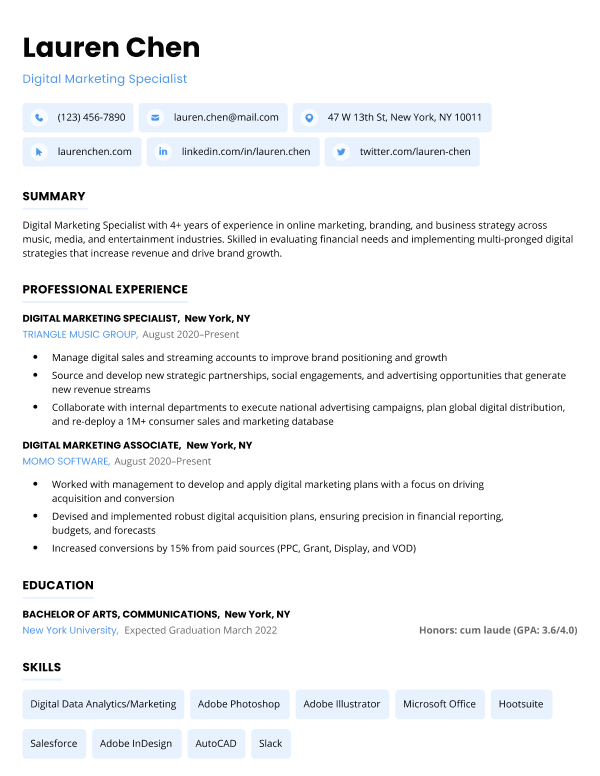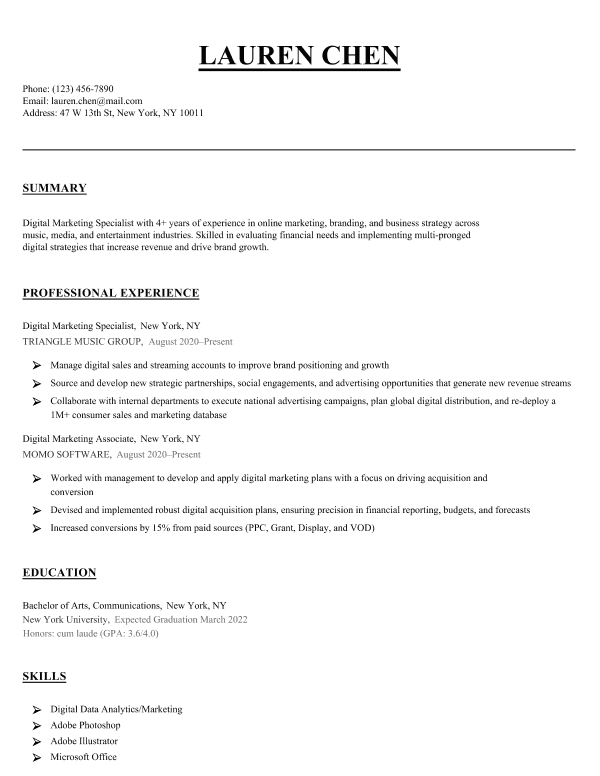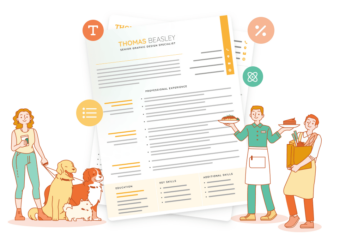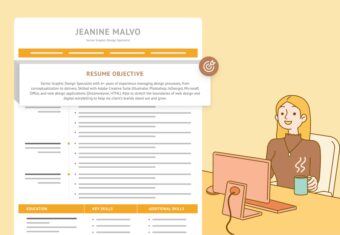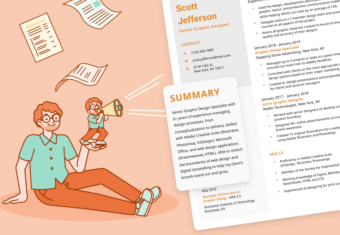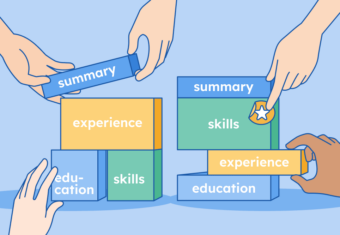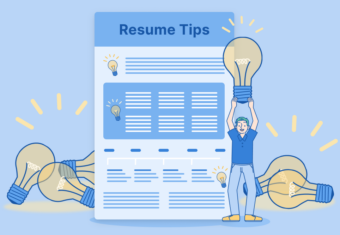The work experience section of your resume is an overview of your previous roles and achievements, and shows you’re qualified for the role you want.
According to Resume Genius’s Hiring Trends Survey, 68% of hiring managers rank “Work Experience” in their top 3 resume sections.
Our free-to-use resume builder can make you a resume in as little as 5 minutes. Just pick the template you want, and our software will format everything for you.
How to format your work experience section
Equally important to choosing the right resume template and overall resume format is knowing how to structure your work experience section. Hiring managers need to be able to quickly verify that you have the experience they’re looking for.
Follow these guidelines to make sure your resume formatting is correct:
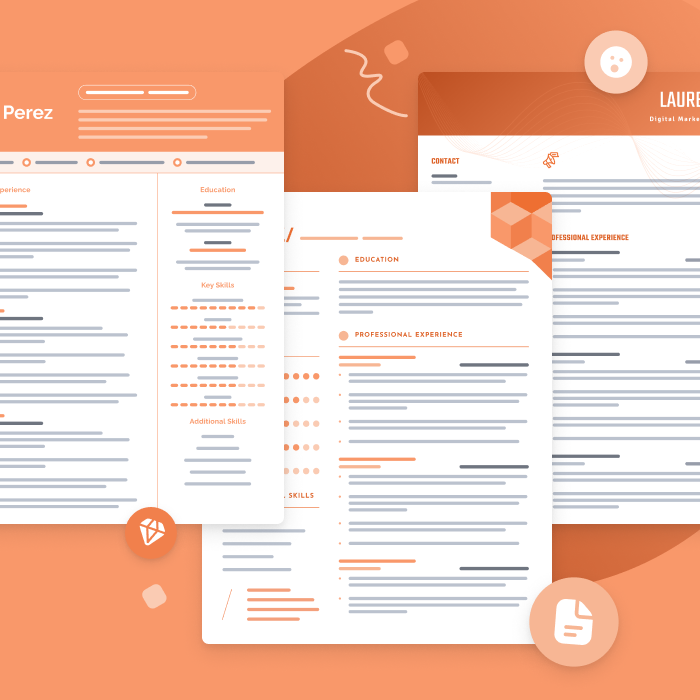
The best resume templates for 2024
One of the best ways to make your resume is by filling out one of our free resume templates. All our templates are designed by experts and free to download for Microsoft Word or Google Docs.
1. Create a dedicated section for your professional experience
First, choose an appropriate title like “professional experience” or “work experience” for the section of your resume where you’ll list your past jobs.
For each job, include the following information:
- Job title
- Company name
- Location of company (city and state)
- Dates you were employed there
- Three to five bullet points highlighting your achievements and job duties
Here’s a template showing how your work experience should be formatted:
Job Title
Company Name, City, State
Start date – End date
- Three to five bullet points describing your achievements and duties while working this job
- Be sure to include hard numbers illustrating what you accomplished when possible
- Each bullet should be focused on your actions, not just passive responsibilities
2. List your most recent work experience first
List your most recent work experience at the top of your work experience section, then go back in reverse-chronological order.
Listing your work experience chronologically on your resume shows hiring managers how you’ve progressed in your career and how your skills have developed over time.
Follow this format when you write your resume’s work experience section:
Title 1
Company, City, State
Start Date-End Date
- (Most recent work experience)
Title 2
Company, City, State
Start Date-End Date
- (Second most recent work experience)
Title 3
Company, City, State
Start Date-End Date
- (Third most recent work experience)
3. Add bullet points to each entry
Under each job, add roughly 3-5 bullet points that highlight how you used your skills to contribute to the organization’s success.
Your resume should use present tense for bullet points in your most recent work experience entry and the past tense when writing bullet points for previous roles.
Here’s an example of effective bullet points on a resume:
How to describe work experience on your resume
Here’s how to write a resume that accurately reflects your experience:
1. Discuss achievements instead of responsibilities
Emphasize accomplishments on your resume instead of just listing job responsibilities. Accomplishments show you made positive contributions to your company’s performance rather than simply doing the bare minimum.
Compare these examples of work experience bullet points to see how effectively listing achievements can strengthen your resume:
Effective bullet point
Implemented a system for tracking business leads that boosted sales by 47%
Ineffective bullet point
Tracked business leads
The first example is effective because it shows the hiring manager exactly how you’ll perform at the job if they hire you.
2. Tailor your bullet points to the job you want
While it might sound time-consuming, the work experience bullet points on your resume shouldn’t be generic.
The content of your work experience section should be targeted to the job you want, with each bullet showcasing specific skills and experience related to the job opening.
You should target the job description in your experience section. Including resume keywords, such as skills and qualifications that appear throughout the job ad ensures you address the hiring manager’s requirements.
3. Begin each bullet point with an action verb
Hiring managers see tons of resumes that start each bullet point with phrases like “responsible for” and “tasked with.”
The problem with language like this is that it’s passive and doesn’t describe what you actually achieved at work.
Instead, you should begin your bullet points with descriptive resume action verbs that clearly show hiring managers what you got done in your previous roles.
Here are some examples of action verbs being used to effectively describe a job seeker’s work experience:
- Organized a work safety initiative that saved the company money on worker’s comp
- Developed new communications protocols that improved connectivity between the company and clients
- Optimized product delivery logistics that accelerated order fulfillment for customers
4. Add numbers to provide additional context
Use numbers to describe your work experience whenever it helps clarify the scope of your work or highlight an impressive accomplishment (this is known as quantifying your resume).
Here are some examples of work experience resume bullet points that include numbers:
- Increased annual sales by 30% by running a marketing campaign in a new market
- Saved company $280,000 per year on printing costs by purchasing two high-end printers and supervising user training
To quantify your own resume, consider mentioning:
- Clients acquired
- Dollars saved
- Customer satisfaction increased
- Revenue generated
- Employees trained/managed
- Customers served
- Expenses reduced
- Attrition rate decreased
- Sales numbers improved
8 Resume work experience examples
Computer Company, LLC, Scottsdale, AZ
2016–Present
- Supervised customer service training program that grew customer engagement by 35%
- Implemented new office layout that enhanced communication between staff
- Won Employee of the Year twice (2017 and 2019)
- Earned highest performance ratings across 7 consecutive months for resolving customer problems
- Developed more efficient filing system for customer records
Wellness Hospital, Boise, ID
2001–2014
- Managed critically ill patients (20+ on my ward)
- Directed new nurses’ training program on practical ventilator function
- Cared for 1,000+ patients in ICU and provided pre-operative care
- Trained 15 team members to use Epic and Cerner patient management software systems
Children’s Middle School, Billings, MT
2011–2018
- Piloted reading initiative that expanded the average student’s vocabulary by 140 words
- Coordinated run–swim–bike events that raised $76,000 for local causes
- Established after-school gaming initiative that cut students’ screen time by 40%
- Introduced SMART boards as Chair of Technology Committee
- Led class to win Best Behaved awards 7% more often than colleagues
Brix Law, Portland, OR
2012-2016
- Researched and drafted pitches, brochures and other materials for client meetings
- Liaised with lawyers to create yearly submissions for 4 leading benchmarking publications
- Maintained updated mailing lists and sent out newsletters and briefings
- Prepared and sent out invitations for seminars, webinars and conferences. Followed up with participants after events, who reported a 98% average satisfaction rate
Whole Foods, Raleigh, NC
2018-2020
- Provided efficient and friendly service to 100+ customers on a daily basis
- Adhered to cash handling procedures as well as check, ATM and credit card procedures
- Trained 10+ new cashiers, ensuring they followed established health, sanitation and safe work practices
- Performed opening and closing duties, making sure each workstation was clean and properly stocked for the day
Manitowoc, WI
2017-2021
- Planned and executed 30+ meetings, events and trade shows with great attention to detail while staying within budget
- Took the lead in negotiations and managed vendors throughout the planning process
- Consulted with clients to ensure their requirements were met and came up with cost-effective strategies, saving clients an average of 8% in budget costs
- Managed logistics including speaker coordination, transportation, agenda planning and event space
Louis Berger Services, San Jose, CA
2013-2017
- Kept inventory and reduced monthly costs by $1000 by evaluating office supply needs
- Liaised with building management for maintenance requests
- Provided daily administrative support including answering incoming calls (60+/day), scheduling meetings, coordinating office activities and greeting visitors
- Facilitated new hire onboarding in communication with management, IT and building security
Wellory, Brooklyn, NY
2018-2021
- Contributed to a 15% increase in engagement across Facebook, Instagram and Twitter within my first 4 months at the company
- Analyzed the company’s existing social media strategy and provided recommendations to the marketing manager
- Identified and reached out to 100+ influencers in the health and fitness industry regarding brand promotions and collaborations
- Communicated with customers across platforms, responding to an average of 100 messages and comments per day
Frequently asked questions about work experience
Here are some frequently asked questions about how to put work experience on a resume:
Can I just put years on my resume?
Yes, you can just put years on your resume. Leaving the exact months you were employed off of your resume’s work experience section is an acceptable way to downplay a gap in your work history and make your experience appear more consistent.
However, don’t imply you worked somewhere for a year when you only worked there a month. If employers think you’re lying on your resume, they won’t hire you.
What jobs should you put on a resume?
You should put relevant jobs on a resume. For example, you should put customer-facing jobs on a resume for a customer service job.
You can also include non-relevant jobs if they demonstrate transferable skills for the position you want.
What order should work experience be listed on a resume?
Work experience should generally be listed on a resume in reverse chronological order, meaning that the most recent job should be listed first and the oldest job should be listed last. This format allows the reader to quickly see an applicant’s most recent and relevant work experience.
For each work experience entry, include the job title, company name, the dates of employment, and three to five bullet points explaining your responsibilities and achievements.
Can you leave jobs off your resume?
Yes, you can leave jobs off your resume. Your resume is an overview of your most relevant experience and skills for a specific position, not a list of every job you’ve held.
You can (and should) highlight any position that’s relevant to the job you want, while leaving off any jobs that don’t improve your chances of getting hired. For example, any older jobs that aren’t important to your current career path (like a babysitting job you had as a teenager) should be left off your resume.
However, be prepared to discuss the jobs you leave off your resume during an interview. Have an answer for why you didn’t mention a previously held position in the event a hiring manager finds out about it and asks.
Click to rate this article
4.8 Average rating



